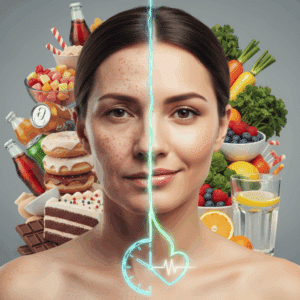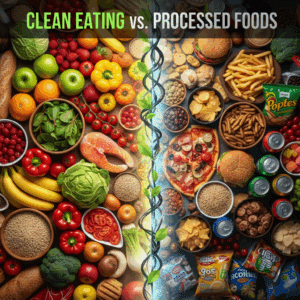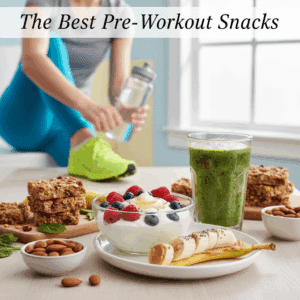Overview of Models’ Dietary Choices
The dietary choices of models do not follow a single extreme pattern but vary widely based on lifestyle and professional needs. Models prioritize nutrient-rich meals focusing on lean proteins, fresh vegetables, and fruits.
Processed foods, sugar, and alcohol are generally limited, especially before important fashion events. This balanced approach supports both health and appearance while accommodating personal preferences.
Common Nutritional Foundations in Models’ Diets
Most models base their diets on lean proteins such as fish, chicken, and eggs, paired with abundant fresh vegetables and fruits. This foundation provides essential nutrients and supports muscle tone.
Avoiding processed foods and excessive sugar is typical, particularly during intensive preparation periods. Meals are designed to maximize nutrient density without sacrificing flavor or satisfaction.
Many models adapt these basics to their needs, with some increasing protein and vegetable intake around major shows, while others maintain a balanced approach allowing occasional indulgences.
Influence of Lifestyle and Professional Demands
Professional demands heavily shape models’ diets. High-energy requirements before fashion events often lead to increased protein and controlled carbohydrate consumption to maintain stamina.
Lifestyle factors, including workout routines and metabolism, also influence eating habits. Some models consume carbohydrates frequently to sustain energy, while others restrict them near runway appearances.
Flexibility is common, allowing models to enjoy favorite foods in moderation and adjust meals based on activity and event schedules, reflecting a pragmatic approach rather than rigid dieting.
Diverse Eating Approaches Among Top Models
Top models employ various eating strategies tailored to their unique lifestyles, preferences, and professional demands. There is no singular diet; instead, approaches vary widely yet focus on health.
This diversity ranges from high-protein and vegetable-centric meals to flexible plans permitting occasional indulgences. Models also explore vegetarian, vegan, and carbohydrate management options.
High-Protein and Vegetables Focused Plans
Many models emphasize high-protein intake combined with plentiful fresh vegetables. This approach supports muscle maintenance, energy, and a lean physique, especially before major events.
Sources such as fish, chicken, and eggs are common, as they offer essential amino acids with low fat. Green leafy vegetables and colorful produce provide vitamins and antioxidants.
Models often pair this diet with rigorous exercise to enhance toning, increasing vegetables for fiber and protein for recovery. This balance fosters sustained energy and a fit appearance.
Balanced Diets with Flexibility and Indulgences
Some models adopt a balanced eating approach, consuming a variety of food groups without extreme restrictions. This allows occasional treats like pizza or sweets in moderation.
Flexibility is key, enabling enjoyment of favorite foods while balancing with nutrient-dense meals like fish and vegetables afterward. This reduces stress around eating and supports mental well-being.
The sense of freedom in this approach helps maintain long-term adherence and prevents the monotony associated with stricter diets, promoting health alongside career demands.
Vegetarian and Vegan Preferences
Many models choose vegetarian or vegan diets either permanently or part-time, reflecting ethical, environmental, or health motivations. Plant-based proteins become central in their meals.
Popular alternatives include legumes, tofu, nuts, and seeds to ensure sufficient protein intake. These preferences highlight how the fashion industry embraces diverse nutritional philosophies.
Transitioning to such diets requires attention to nutrient balance but fosters variety and aligns with broader wellness trends embraced by prominent models.
Carbohydrate Intake Variations and Management
Carbohydrate consumption varies greatly among models, influenced by metabolism and event timing. Some consume carbs frequently to sustain energy, especially those with fast metabolisms.
Others monitor and restrict carbohydrates before shows, favoring whole grain sources while controlling quantity to enhance leanness. This personalized approach optimizes runway readiness.
Balancing carbs with proteins and fats allows models to maintain energy without unwanted weight fluctuations, highlighting precise nutritional tuning aligned with performance needs.
Hydration and Caloric Awareness in the Modeling World
Hydration plays a crucial role in the daily routine of models, impacting their appearance and energy levels. Many prioritize water, herbal teas, and coffee while avoiding sugary drinks.
This mindful fluid intake supports skin health, digestion, and overall performance during demanding work schedules and physical activities. Hydration habits are integrated thoughtfully.
Preferred Fluids and Hydration Habits
Water stands as the primary fluid consumed by models to maintain optimal hydration. Its role in flushing out toxins and promoting clear skin is highly valued in the industry.
Alongside water, herbal teas and coffee are popular choices, providing comfort and alertness without excess calories. Sodas and industrial juices are generally avoided for their sugars.
This preference reflects a commitment to natural, nourishing liquids that support both internal health and external appearance, emphasizing hydration as a foundation rather than luxury.
Attitudes Towards Calorie Counting and Meal Composition
Many models do not strictly count calories, focusing instead on meal quality and balance. Emphasis is placed on whole foods rich in proteins, healthy fats, and fibre.
This approach fosters satisfaction and nutrition without obsession, allowing flexibility and preventing the stress associated with rigid calorie restriction often linked to unsustainable dieting.
Comprehensive meal planning includes lean proteins, whole grains, and vegetables, enabling sustained energy and satiety. This mindful eating supports mood, metabolism, and long-term health.
Health Consciousness and Industry Support
The modeling industry is increasingly prioritizing health and well-being over extreme dieting practices. This cultural shift recognizes the importance of balanced nutrition for sustained success.
Models now focus on wholesome meals that fuel both body and mind, moving away from restrictive diets that can harm physical and mental health. This fosters longevity in demanding careers.
Shift Away from Extreme Diets to Well-Being Focus
The era of radical, restrictive diets is fading as models and professionals emphasize holistic wellness instead. Balanced nutrition supports endurance and mental clarity.
Rather than pursuing rapid weight loss, models seek sustainable eating habits that include nutrient-dense foods and occasional indulgences to maintain satisfaction and energy.
This shift reflects broader societal trends toward health-consciousness and self-care, confirming that nurturing the body is key to peak performance and career longevity.
Role of Agencies in Promoting Nutritional Guidance
Agencies now play a crucial role in supporting models’ nutritional health by providing access to experienced dietitians and wellness professionals, aligning care with industry demands.
Such guidance encourages personalized meal planning, hydration habits, and balanced caloric intake to promote physical and mental resilience throughout intense schedules.
By fostering this support system, agencies help models avoid harmful fad diets and embrace practices that sustain health, ensuring ethical standards and enhancing career satisfaction.






